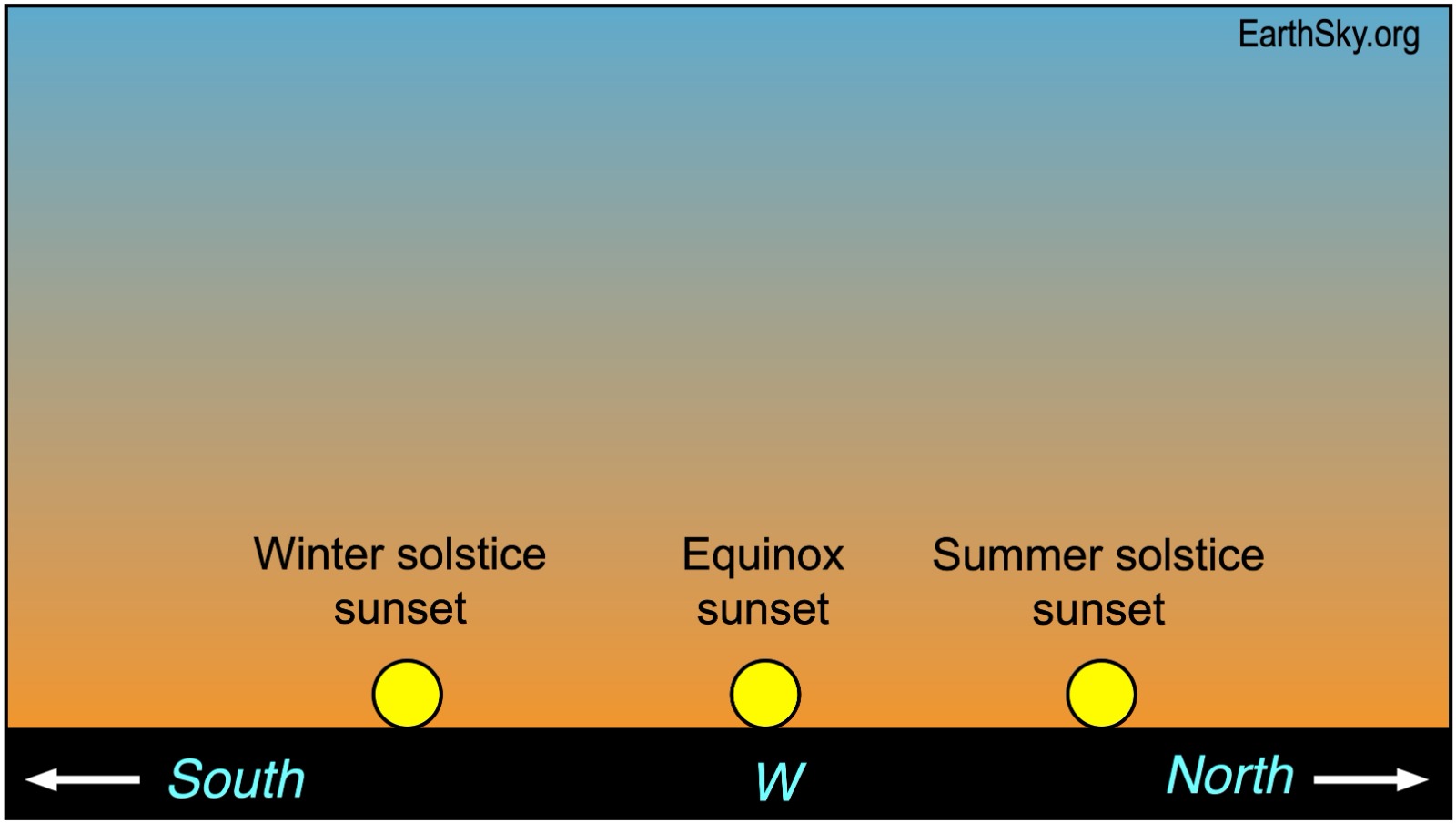
Read more: March equinox 2024, aka the vernal equinox. It arrives at 3:06 UTC on March 20.
Equinox fun: Track the sunset point
The sun’s movement from day to day along your horizon – at the sunrise or sunset point – is most noticeable around the equinoxes. And many streets in the U.S. and in other parts of the world are oriented either north-south or east-west. So, just by looking out the doorway of your home, you might be able to watch the progress of the sun as it slides from south to north in the weeks and months following the March equinox.
Join us in making sure everyone has access to the wonders of astronomy. Donate now!
On the equinox, the sun rises directly in the east and sets directly in the west. You can see it move quickly further north each day afterward. No grid of streets to help you? Try tracking the sun’s progress along the horizon by placing bits of tape on an east- or west-facing window of your home. Or just find a clear spot – a place where you can see the horizon – and stand in the same spot whenever you watch the sunrise or sunset. You’ll notice the sun’s movement with respect to trees and other objects in the foreground.
Just be sure to observe from the exact same location every day. It’s enough to note the sunrise or sunset point every week or 10 days. You’ll easily see the sun’s northward shift between now and the June solstice.
Then track between the solstices
What happens at the solstice? At mid-northern latitudes, there’s a two- to three-week time period where you probably won’t discern any movement of the sun along the horizon. That’s where the word solstice comes from. Solstice = sun still.
How much does it move?
We received a question from a reader about the movement of the sunset or sunrise along the horizon as Earth moves between seasons. They wrote:
Hello, I’m curious to know how far the sun moves north or south along the horizon each day? Like half its width? A quarter of its width?
The answer is that the degrees of the sun’s movement along the horizon depends on two things:
1) The time of year.
2) Your latitude.
As mentioned above, the sun’s movement along your horizon – at sunrise or sunset – is most perceptible around the equinoxes and least perceptible around the solstices. Also, the sun’s daily change of position along the horizon is greater the farther north or south you are from Earth’s equator.
It’s all about your latitude
For example, at around 40 degrees north latitude (Denver, Colorado; island of Sardinia, Italy; Beijing, China), the sun pretty much rises due east and sets due west on the day of the March 19-20 equinox. Two weeks later, on April 4, the sun rises about 7 degrees north of due east and and sets about 7 degrees north of due west. Because the sun’s diameter equals 1/2 degree, that means the sun has been traveling its own diameter (14 days x 1/2 degree = 7 degrees) northward daily.
At 65 degrees north latitude (Fairbanks, Alaska; Siberia; Iceland), the sun also rises and sets close to due east and due west on the day of the equinox. But two weeks later, on April 4, the sun rises and sets about 14 degrees north of due east and west. So, at this far-northern latitude, the sun moves about one degree (two sun-diameters) along the horizon daily during this two-week period from the spring equinox to April 4.

Bottom line: The amount of the sun’s movement along your horizon – at sunrise or sunset – varies with the time of year and with your latitude. It’s most perceptible around the equinoxes and least around the solstices.











